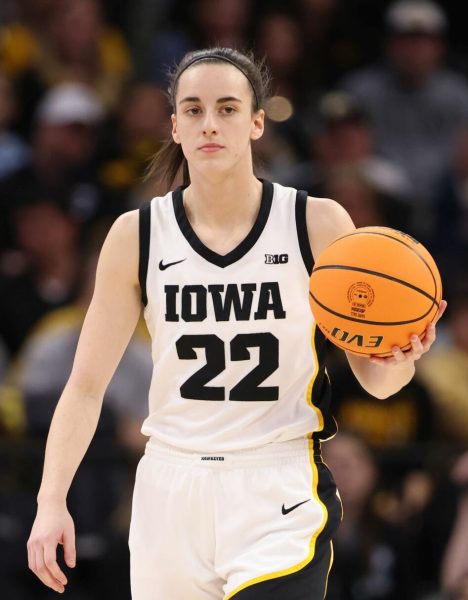Kerekes: What’s she doing holding that clipboard?
Addressing the gender gap in coaching
April 7, 2017
Sports have been used as a way to escape everyday life since the time of Ancient Rome. When spectators attend a sporting event, they expect to distance themselves from society’s problems and be entertained.
However, problems in our society are reflected in the sports themselves.
Racial tensions are a good example of society seeping into sports. Baseball was racially segregated until Jackie Robinson broke the color barrier in 1947, and the league was not fully integrated until 12 years later. In the early 1970s, Hank Aaron, when chasing Babe Ruth’s home run record, received racially motivated hate mail and heard more than his fair share of insults in the outfield. In more recent years, Colin Kaepernick’s protest of the national anthem brought him an onslaught of racist insults but also drew more attention to police brutality.
All of this is to say that if sports reflects society, why aren’t there more female coaches in the sports industry as a whole?
It should be very alarming that in the year of the record breaking Women’s March on Washington less than half of head coaches for NCAA Division I women’s varsity teams are women. That number has steadily dropped from over 90 percent before the passage of Title IX in 1972.
Just think about that for a second. The majority of women’s teams are coached by men. Now look over to the men’s teams. You’d be hard pressed to find more than a handful of female head coaches at the highest level. Around three percent of all NCAA head coaches for men’s teams are women. At the professional level, only the NBA has multiple female full-time coaches (two), and none of the “big four” sports leagues have a female head coach.
The problem escalates with lower division number. As of 2016, Division I has the lowest percentage of female coaches in men’s sports while Division III has the highest at six percent of all coaches. Division III also has the lowest percentage of male coaches in women’s sports at 56 percent. At Case Western Reserve University, a Division III school, 25 percent of the women’s teams are coached by men and only one of the nine men’s teams is coached by a woman.
Unfortunately, the numbers do not reveal why the difference is so stark.
One of the possible explanations is the low number of female sports executives. Just 20 percent of college athletic directors are women and they are the ones who make the hiring decisions on head coaches. One of the reasons CWRU is higher than average in gender diversity is because our athletic director, Amy Backus, is female.
The result of a lack of female coaches is the lack of role models for female athletes who want to become coaches. Nicole LaVoi, co-director of the Tucker Center for Research on Girls and Women in Sports, said in an interview with the New York Times that her “biggest concern is that young women are not often getting the opportunity to have a female coaching role model.”
Another reason is the influx of money into women’s athletics at the collegiate level.
“As women’s sports blossomed and coaching positions became more lucrative and prestigious, the jobs grew increasingly attractive to anyone looking for a coaching career, including men,” wrote Rachel Stark in the NCAA’s Champion magazine.
Women did not get the same bonus in men’s sports.
Whatever the reasoning, there is a clear gender problem in sports that needs to be fixed. Solutions vary as much as the reasons. The quickest fix would be to add a rule at the NCAA and professional level requiring departments to interview a female candidate for any coaching vacancy, similar to the NFL’s Rooney Rule for minorities. If it were to work, the rule would dramatically increase the number of female assistants in men’s sports and also decrease the number of men in female head coaching positions.
I’m not saying that men shouldn’t be coaching women’s teams, rather I would just like to see increased opportunities for women. As for women coaching in men’s sports leagues, they deserve just as much of a chance.
This is not progress for its own sake. Numerous studies have found that diversification in the workforce has been proven to be more productive. And the argument that women can’t coach because they haven’t played is nonsense. That same reasoning was used to prevent stats-focused executives from running teams. And now nerds rule the sports world.
There’s no reason at all why women cannot be successful coaches of men’s teams. The opportunity just needs to be given.
Eddie Kerekes is a second-year chemical engineering major and German minor and is the Sports Editor for The Observer.

























